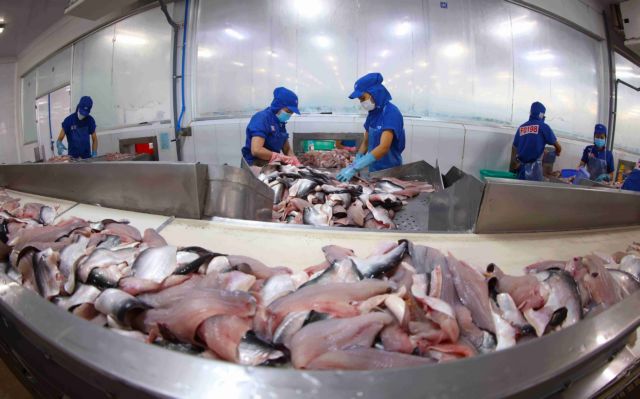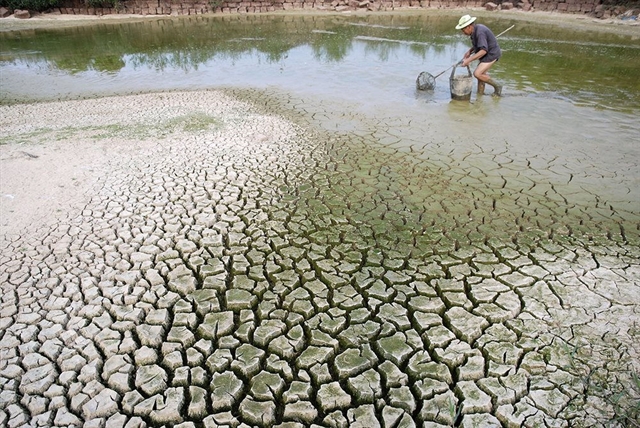 Environment
Environment


|
| Professor Doctor Trần Thục. — Photo baotainguyenmoitruong.vn |
According to meteorological experts, natural disasters are predicted to become more unpredictable and extreme due to climate change. Professor Doctor Trần Thục, former director of Institute of Hydrometeorology and Climate Change and president of Việt Nam Association of Hydrometeorology talks to Tài Nguyên và Môi Trường (Natural Resources and Environment) newspaper about this issue and the need to promote disaster risk management.
Can you tell us more about the scientific research results which have shown that climate change is increasing the risk of natural disasters?
Risk is a combination of hazard, exposure and vulnerability. Climate change will therefore affect disaster risks in two ways, firstly through the likely increase in bad weather and climate hazards, and secondly through the increase of vulnerability in communities to natural hazards, particularly through ecosystem degradation, reductions in water and food availability, and changes to livelihoods.
Climate change is expected to worsen the frequency, intensity and impacts of some types of extreme weather.
In 2019, the average global temperature rose by about 1.1 degree Celsius since the pre-industrial era. The global average sea level in 1902-2015 increased by about 1.5mm per year, 3.16mm in 1993-2015 and 3.6mm in 2006-15, the number of intense tropical storms increases in intensity and super typhoons occur more and more.
In Việt Nam, the annual average temperature increased by 0.89 degree Celsius in 1958-2018, and 0.74 degree Celsius between 1986-2018. Extreme rainfall increased in most regions of the country. The frequency and intensity of heat extremes increase while cold extremes decrease. The sea level rises 2.74mm per year. The number of severe storms in the East Sea tends to increase and prolonged droughts occur more often.
Under the impact of climate change, Việt Nam is witnessing unusual signs of weather and climate. For example, in January 2014, the middle of the dry season, the central provinces from Hà Tĩnh to Quảng Ngãi experienced unusually heavy rains and flooding, even stronger than the rainy season in the following year. In recent years, rainfall occurs unusually in the central region.
Climate change also increases exposure and vulnerability. Climate phenomena such as slow-moving droughts and sea level rise tend to affect livelihoods and can lead to long-term migration, directly affecting exposure to hazards and vulnerability of local people. Việt Nam ranked 17th of 82 countries with the most displacement by natural disasters, according to a report by the Center for International Mobility Monitoring.
How does the adaptation of climate change contribute to disaster risk management? What are the challenges in linking climate change adaptation (CCA) and disaster risk reduction (DRR)?
Climate change makes natural disasters more severe, so disaster risk management can be promoted in the context of climate change. For example, after the storms and floods in 2009, Quy Nhơn City, Bình Định Province, postponed its plan to expand the city to the north and started to restore mangroves as a protective measure.
CCA and DRR have similar aims, focusing on mitigating the vulnerability of people.
CCA requires the reshaping and redesign of socio-economic development activities to effectively respond to climate changes.
DRR is the development and application of policies, strategies and practices to minimise vulnerabilities and disaster risks throughout society.

|
| Climate change is expected to worsen the frequency, intensity and impacts of some types of extreme weather events. — Photo baotainguyenmoitruong.vn |
However, there are certain differences.
DRR often focuses more on emergency response and extreme events while CCA mainly focuses on long-term programmes to adapt to natural disasters and to changed average conditions.
Linking climate change adaptation and disaster risk reduction has certain challenges. That is the difference in specialised language and terminology, project implementation and institutional, policy and financial constraints. The lack of cooperation also makes it more difficult to link them.
What are the consequences of the lack of linkage between CCA and DRR and what solutions are needed?
Lack of linkage can lead to increased risk of natural disasters, pressure on natural resources such as land and water, potentially conflicts and insecurity.
They should be integrated on the same agenda and working together when possible to reduce vulnerability and enhance resilience. It is crucial to link DRR and CCA to benefit simultaneously from risk reduction and adaptation measures.
CCA and DRR can be linked through enhanced coordination and cooperation among ministries and agencies in policy making, implementation of cooperation programmes and sharing tools and methods of implementation. — VNS